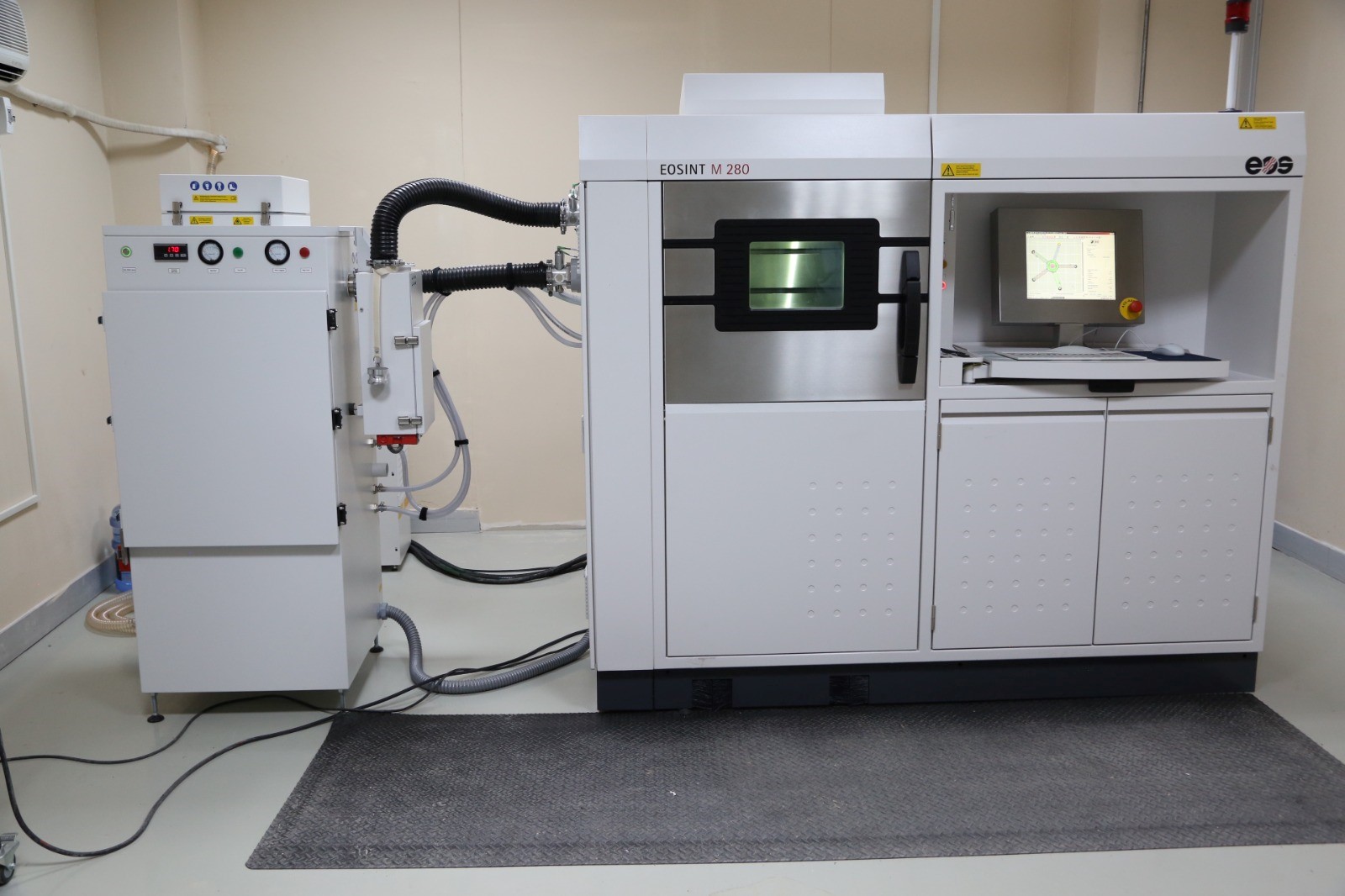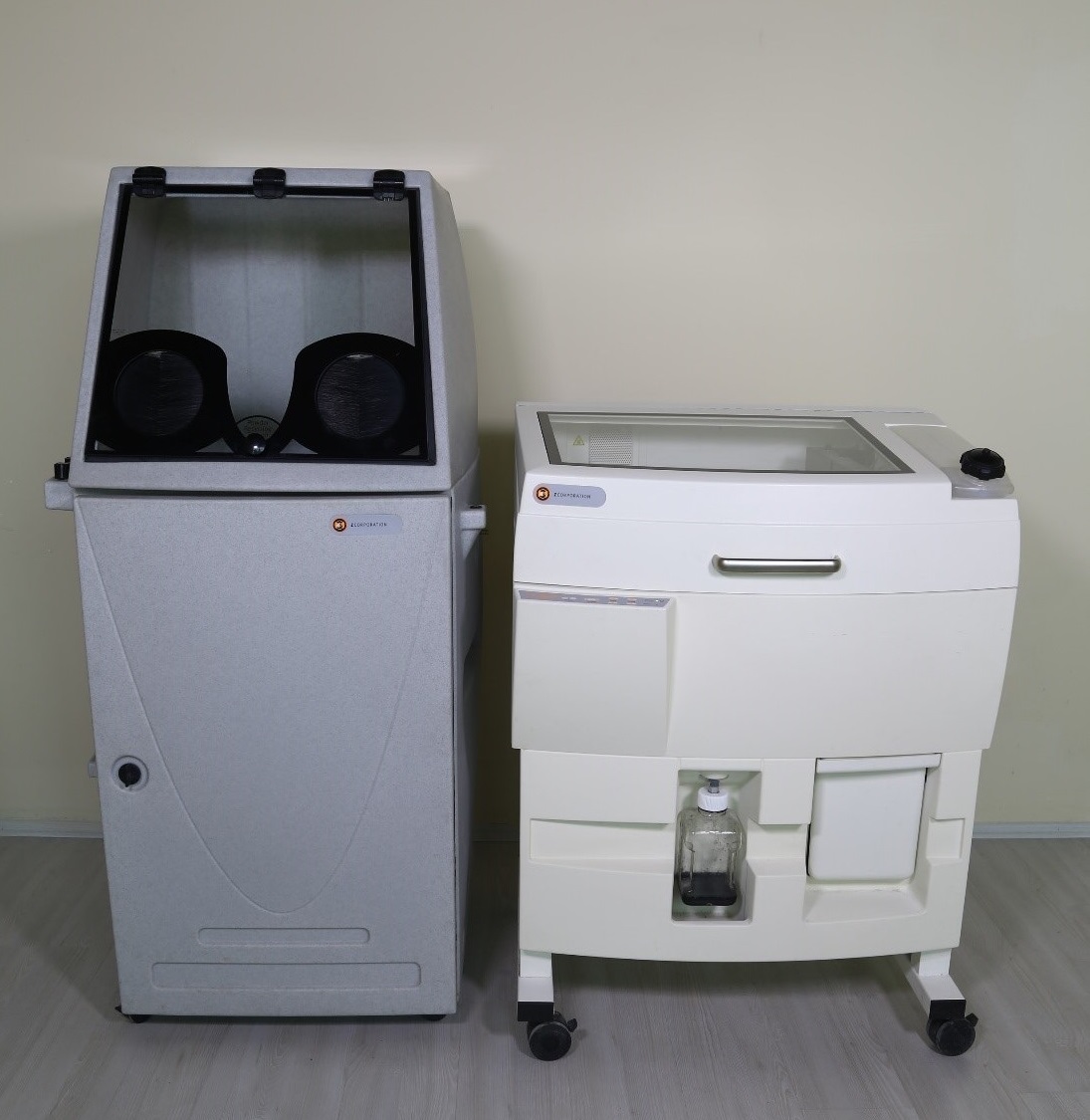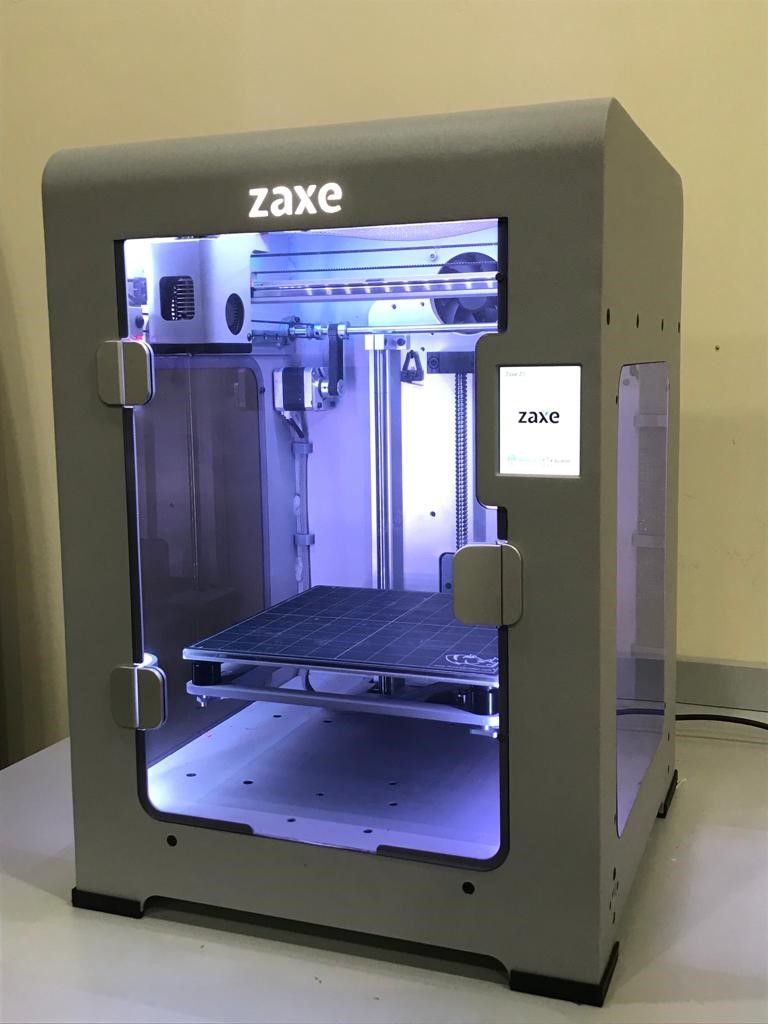Additive Manufacturing
Today, three-dimensional printing is one of the technologies that is increasingly used and constantly developing. This technology is also referred to as additive manufacturing. Due to its significant advantages, many industries including aerospace, space, defense, medical, automotive, architecture etc. implement this method with various printers which use metal, plastic and other materials. In our laboratory, we manufacture metal and plastic parts using this method with the following machines.
Powder bed fusion (PBF) process is a powerful additive manufacturing technology. Direct metal laser sintering is one of the PBF processes. It uses the laser, as a heat source, to fuse the metal powder accommodated in powder bed for the purpose of manufacturing 3D metal parts.
 |
Machine specifications: Building size: 250 mm x 250 mm x 325 mm Laser type: Yb (Ytterbium) fibre laser, 200 W Optics: F-theta-lens, high speed scanner Scan speed: Maximum 7m/s Variable focus diameter: 100-500 µm Position reproducibility: ≤ ± 0.005 mm Power consumption: Maximum 8.5 kW Nitrogen generator: Available Software: EOS RP Tools, EOSTATE, EOS PSW Metal powder materials: EOS MaragingSteel MS1, EOS StainlessSteel GP1, EOS StainlessSteel PH1, EOS CobaltChrome MP1, EOS Titanium Ti64, EOS Titanium Ti64ELI, EOS NickelAlloy IN718, EOS NickelAlloy IN625, EOS Aluminium AlSi10Mg |
- Metal powders are precisely spread with accurate recoating and building platform movements.
- Depending on the metal powder material, HSS or ceramic blades are used for recoating. Powder recoating speed is in the range of 40-500 mm/s.
- Thanks to the platform heating module, the internal stresses in the part are reduced and the first layer is well welded to the platform. The platform heating module can operate in the range of 40-100 °C depending on the metal powder material to be used.
- According to the metal powder material, manufacturing can be carried out in argon and nitrogen atmospheres.
- By means of the software modules of the device, the entire manufacturing process can be monitored and a part quality and manufacturing report can be prepared.
- The software of the machine allows to modify manufacturing parameters (e.g., laser power, scanning speed etc.). In doing so, it is possible to manufacture industrial and experimental parts having different mechanical properties.
Binder jetting is another additive manufacturing method. It basically sprays the binding liquid onto the powder bed to build solid parts layer-by-layer. In this technology, metal, sand, ceramics, composite, plastic, wood etc. powder material can be used. The Z Printer 310 Plus uses plaster-ceramic composition powder and it is frequently used in many areas such as molding, architecture, art, medical, rapid prototyping, reverse engineering etc.
 |
Technical Specifications: Building size (x, y, z): 203 mm x 254 mm x 203 mm Resolution: 300 x 450 dpi Build speed: 25 mm/hour Layer thickness: 0.089-0.203 mm Printer software: Zprint |
Fused deposition modeling (FDM) is a widely used additive manufacturing method. In this technology, basically, melted thermoplastic filament is extruded to desired areas to build parts. As such, Zaxe Z1 is an industrial type FDM printer and it allows to use various filament types including PLA, ABS, PETG, FLEX, Nylon etc. This printer is employed in many areas such as reverse engineering, architecture, hobby, medical, art, etc.
 |
Technical Specifications: Printing size: 200 mm x 200 mm x 205 mm Printer size: 550 x 570 x 715 mm Layer thickness: 0.1 to 0.6 mm Printhead: Single Nozzle diameter: 0.2, 0.4, 0.6, 0.8 mm Filament types: PLA, ABS, PETG, Flex, Nylon etc. Filament diameter: 1.75mm Maximum nozzle temperature: 320 °C Software: Zaxe xDesktop |